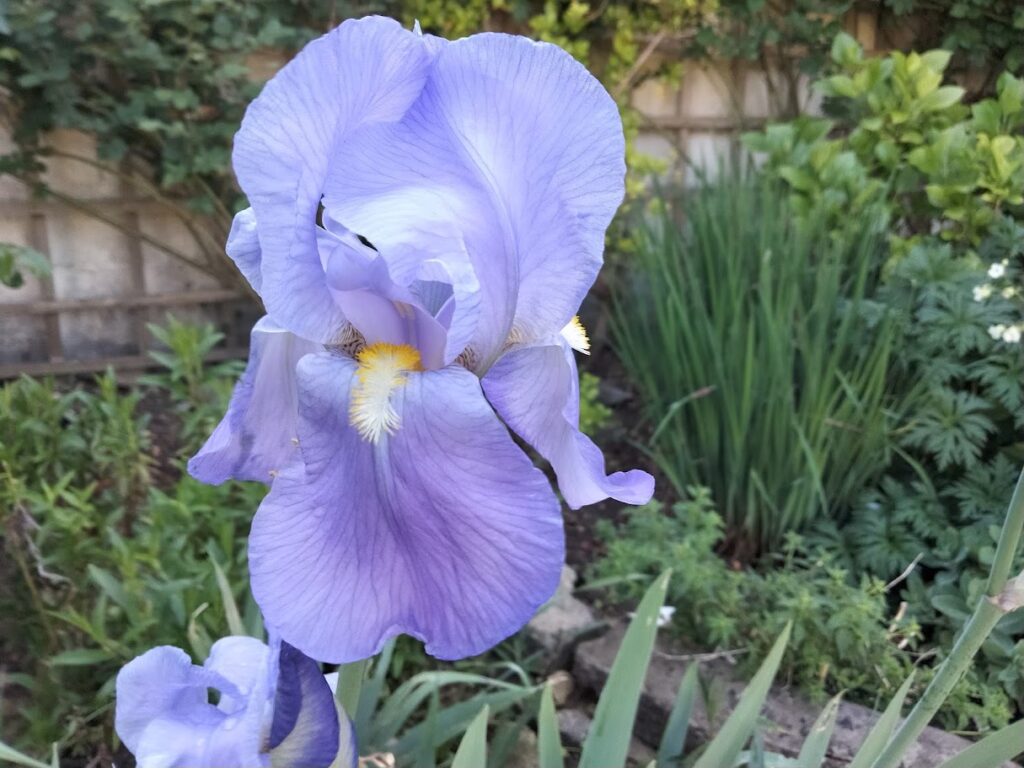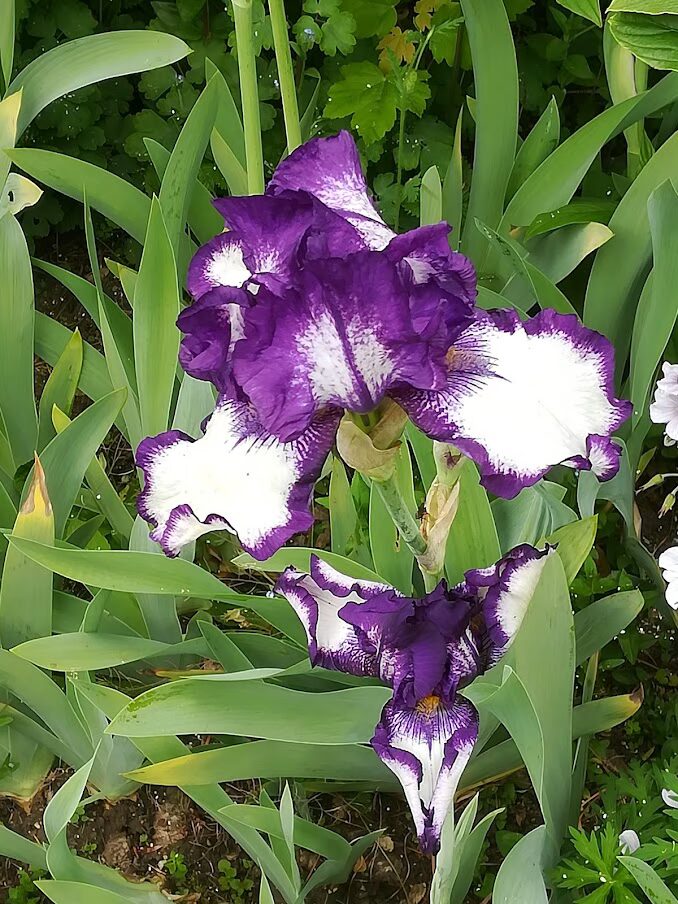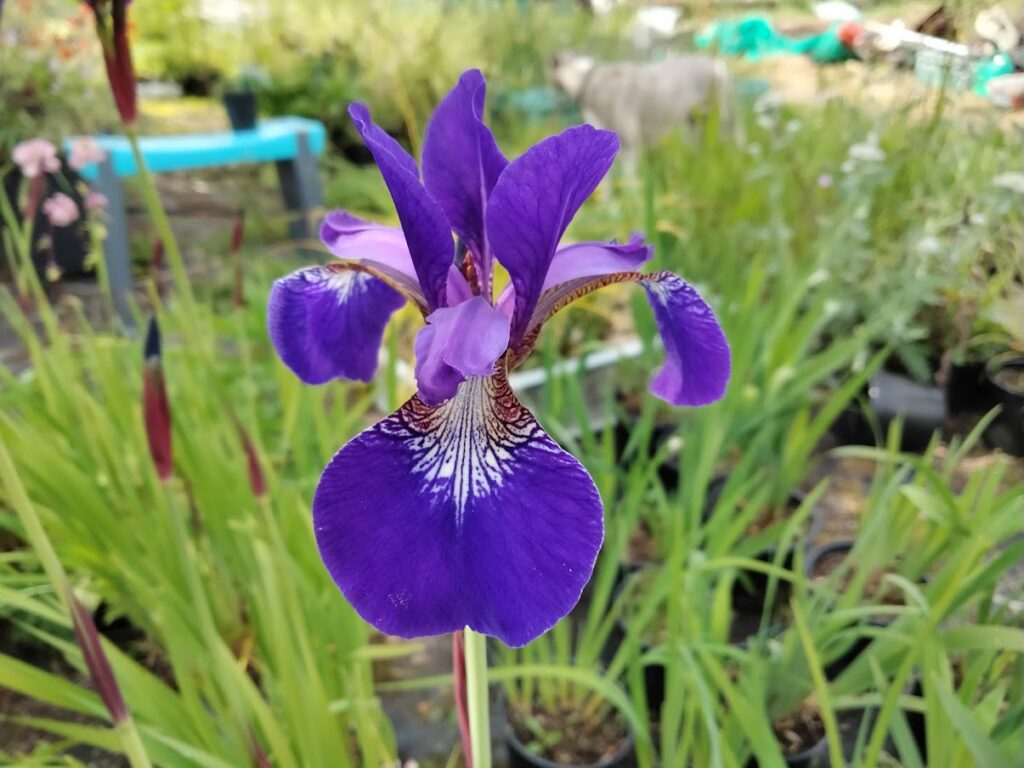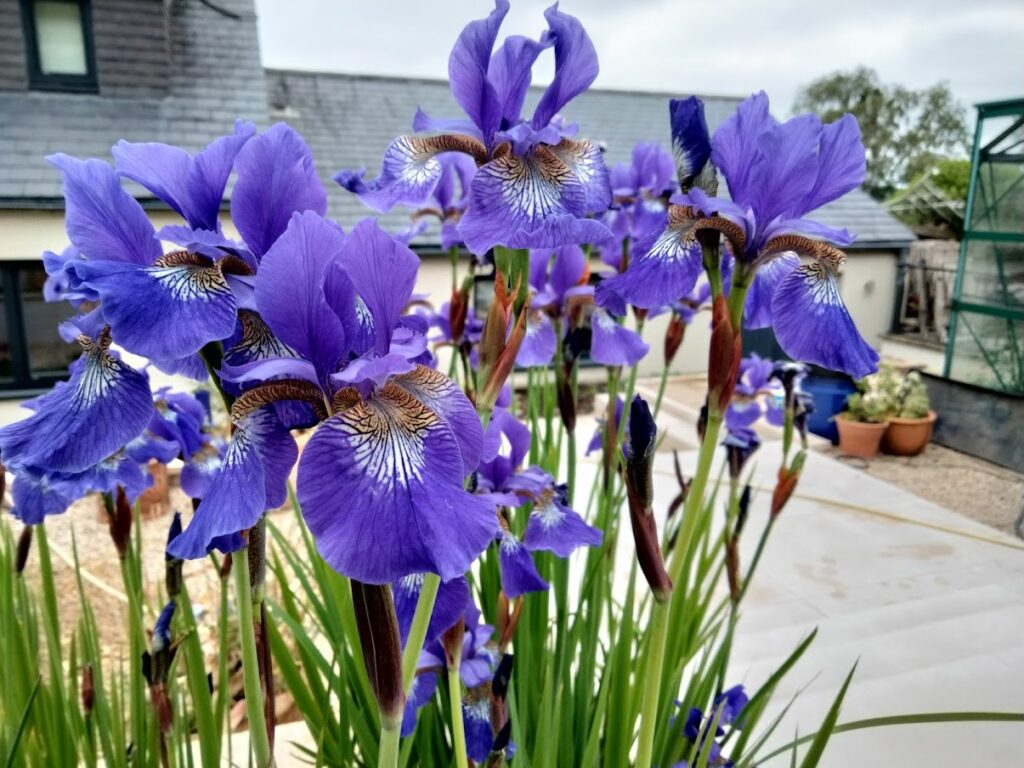Flamboyant blooms
The Iris is a vast group of flowering plants from around the world natively. They also have a long flowering period with Irises starting to flower in January right through to August depending on type.
An Iris can be described as the colour in an eye,
‘’Iris’’ in Greek mythology is the goddess of the rainbow, often depicted as the messenger of the god, especially Hera. Using the rainbow bridge to swiftly travel between heaven and earth.
For this article we will look and the very flamboyant Iris, Iris germanica or the bearded Iris. So called as the anther is large and fluffy and pokes out of the flower on the falls. The falls are referred to the downward pointing petals
Iris germainica originate from Mediterranean regions. The flower spikes occur from late spring in to early summer and the flowers stems can grow up to 3 – 4 feet depending on variety. There are hundreds of hybrids with flower colours raging from Jet Black to brilliant whites and almost every colour in-between. Many are bi-coloured and some have wavy petals both top and bottom. Some are pleasantly scented also. These Iris produce thick rhizomatous roots the creep on the surface. These fleshy growths need to be baked on the sun all summer long to ripen the rhizomes so they flower well the following year.
They are propagated by division usually after flowering has finished. Dig up large groups of Iris, remove all old rhizome parts and keep strong healthy rhizomes with a healthy growing fan (a fan is referred to the grown end of the rhizome). Small fans can be kept to grow into larger plants or for potting up and giving to a friend. Cut two thirds of the foliage and remove any dead leaves also. Dig the soil and add some bone meal to the area. Replant the rhizomes on the surface, with all the roots in the soil. Water well and allow to re-establish.
I have found that they can be propagated early in the year before flowering. However, it can result in the plants not producing flowers.
An annual top-dress of bone meal a year is also helpful.
Another for flowering this time of year is the Iris Siberica – Siberian iris.
These occur natively around European countries. Like the above they have rhizomatous roots with a growing point at one end. The leaves are long and grasslike and the flowers occur on thick stems above the foliage. They are often found growing in or near water but, on saying that I have seen it growing quite happily in full sun and quite dry sites. These grow to 2 feet and with flowers to around 3 feet.
They are quite often shades of blue flowers but with modern hybridization many colours can be found.
The grass like leaves wither in winter and can easily be cut back, in readiness of new growth in the spring. The old flower stems can be use for winter dried flower arrangements.
These are often dug up and split before flowering when the roots are active.
Below is a gallery of pictures relating to June








